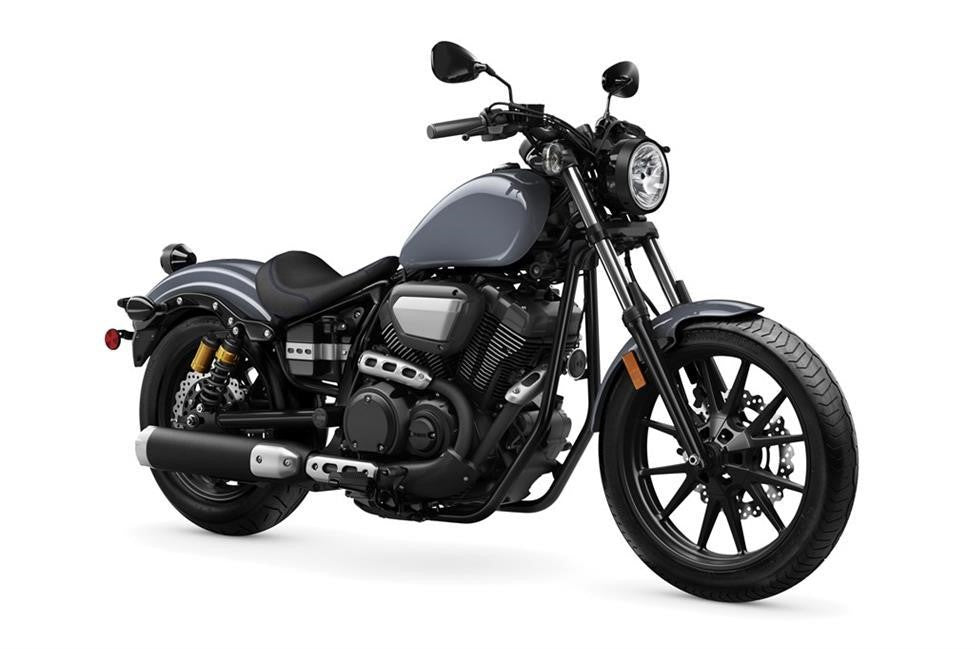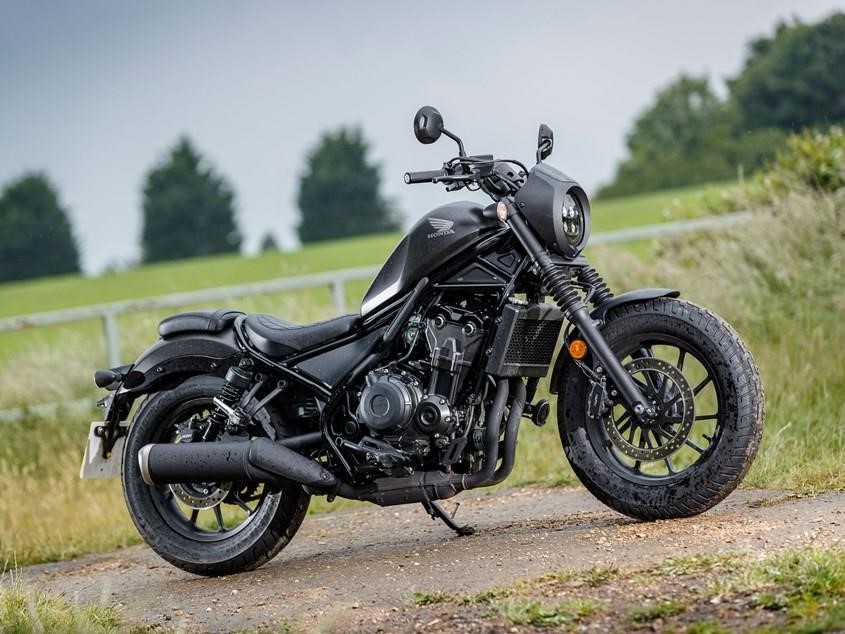Table of Content
Choosing a perfect bike to start your riding journey is never easy. You have to look at a lot of specs and features which you don’t fully understand and even have to research their competitive market prices. That’s why this article provides a detailed comparison of the two most popular bikes on the market: the Yamaha Bolt and Honda Rebel 500, both of which are equally good for novice and experienced riders.
Read on to find out their detailed specs, price range, and overall performance to decide which of these two bikes is better for you.
1. YAMAHA BOLT VS HONDA REBEL 500
Both the Yamaha Bolt and Honda Rebel 500 are good entry level cruisers with a lot of similarities in their design and outlook. However, the major difference is in their engines, torque delivery, and fuel economy. The Yamaha Bolt delivers better torque with its 942cc air cooled V-twin engine while the Honda Rebel 500 is more economical and provides a greater fuel mileage. The Yamaha Bolt is also a bit more expensive than the Honda Rebel 500 due to its larger displacement.
Let’s now look at both of these bikes in detail.
1.1 Yamaha Bolt at First Glance

The Yamaha Bolt debuted in 2013 as a café racer motorcycle to expand Yamaha’s Star cruiser lineup. The bike featured a sleek bobber style with a 942cc V-twin engine and upright seating position. The bike felt light due to its narrow frame and compact design, making it a perfect cruiser for beginners and intermediate riders.
Yamaha also introduced two updated versions of the Standard Bolt: the R-Spec and C-Spec with improved piggyback rear suspension for better riding experience.
The Yamaha Bolt’s specs are similar to the Harley Sportster. In fact, it is actually a superior version of the Harley Sportster but with a modern engine design, vintage look, good handling, enhanced performance, and endless customization options.
1.2 Honda Rebel 500 First Glance

The Honda Rebel 500 was launched in 2017 after the Rebel 300. The introduction of this bike marked the beginning of a new cruiser era with its great style, mobility, and outstanding performance.
Powered with a 941cc parallel V-twin engine, the Honda Rebel 500 offers a pleasurable riding experience with a decent amount of torque. The low seat height, nitrogen-filled rear suspension, and roomy rider triangle make this bike a good choice for both novice and experienced riders.
2. YAMAHA BOLT VS HONDA REBEL 500: WHICH IS BETTER?
Pros
| Yamaha Bolt | Honda Rebel 500 |
|---|---|
| Extraordinary Styling | Less Costly |
| More torque | Light Weight |
| Greater tank capacity | Greater Mileage |
| Better Road Stability | Aftermarket parts easily available |
Cons
| Yamaha Bolt | Honda Rebel 500 |
|---|---|
| Less mileage | Less torque |
| Expensive | Small Displacement |
3. YAMAHA BOLT VS HONDA REBEL 500: DETAILED COMPARISON:
3.1 STYLE:
As far as styling is concerned, the Yamaha Bolt has a custom bobber look with its low split seat, chopped fenders, and teardrop-shaped fuel tank. Yamaha adopted a minimalistic approach while designing this bike and kept this bike a blank canvass for customization with no extra shiny chrome parts. The short, fat handlebars give this bike a masculine sportster appearance and the 942cc V-twin engine acts as the centerpiece of the design.
On the other hand, the Honda Rebel 500 features a classic cruiser style with a blacked out engine, wide front wheel, and novel LED lighting to go with the modern innovations. The bike is lighter than the Yamaha Bolt and offers a fun ride with a comfortable riding position.
3.2 ENGINEERING:
The major difference between the Yamaha Bolt and Rebel 500 is in their engineering. Both bikes are powered with fuel injected twin engines but the cooling mechanism is different. The Yamaha Bolt is driven by an air-cooled 942cc V-twin engine while the Honda Rebel 500 is powered by a liquid cooled 471cc parallel-twin engine.
The Yamaha Bolt’s engine is two times bigger than the Honda Rebel 500, producing more torque and providing better torque delivery, especially in the low- and mid-rev range. Moreover, the engine is also unique, durable, and reliable. The five-speed transmission in the Yamaha Bolt is more durable. However, the six-speed transmission in the Honda Rebel 500 has the advantage of being more flexible.
3.3 PERFORMANCE:
The Yamaha Bolt has better performance as the powerful 942cc engine produces 53 hp, 25% more than the Honda Rebel 500 and the maximum torque is 77 Nm at 3,000 rpm. On the contrary, the Honda Rebel produces a maximum torque of 43 Nm at 5,000 rpm. The Bolt is easier to maneuver through traffic with just a slight throttle twist thanks to the powerful torque at low rev.
The Rebel also has a slightly better power to weight ratio as it weighs 130 lbs less, but this advantage disappears if the rider exerts too much weight. To maintain speed, the Rebel 500 would need to downshift frequently.
When it comes to fuel economy, the Honda Rebel 500 is more economical with 67 mpg compared to the Yamaha Bolt with a fuel economy of 52 mpg. However, the Bolt’s fuel tank has a larger capacity.
3.4 UNDERPINNINGS:
The Yamaha Bolt has a longer chassis than the Honda Rebel 500, but with exactly the same seat height of 27.2 inches. The aluminum double cradle frame has a 29° rake. Both the front and rear brakes are 298mm single discs. The distinctive 12-spoke wheels increase the bike’s durability. On the other hand, the Rebel 500 has a steel double cradle frame with a shorter wheelbase and comfortable seat height. The suspension and brakes are pretty straightforward and function as they are supposed to.
3.5 ERGONOMICS:
Both the Yamaha Bolt and Honda Rebel 500 have a straight riding position and low seat height. But the Yamaha Bolt feels more comfortable and can be customized easily with passenger backrests and saddlebags if you wish to travel with a passenger. However, the Rebel 500 has superior handling due to its slightly wide handlebars along with its nimble and compact design.
3.6 PRICING
The standard price of the Honda Rebel 5000 is about $6,399 compared to the Yamaha Bolt’s standard price of $7,999. The Rebel 500 is a great bike for those who want to enjoy a good ride with decent power and more mileage at an affordable price. Although the Yamaha Bolt is a bit expensive, there is no alternative for the bike’s enormous power and durability.
4. DETAILED SPECS: YAMAHA BOLT VS HONDA REBEL 500
General Information
| Yamaha Bolt | HONDA REBEL 500 | |
|---|---|---|
| Manufacturer | Yamaha | HONDA |
| Production | 2014-Present | 2017-Present |
| Model | Yamaha Bolt | REBEL 500 |
| Category | Custom / Cruiser | Custom / Cruiser |
| Color | Raven | Matte Gray Metallic, Pearl Organic Green |
| Price | $7,999 | $6,3999 |
Dimension and Capacities
| Yamaha Bolt | HONDA REBEL 500 | |
|---|---|---|
| Wheelbase | 61.8 in | 58.7 in |
| Overall Length | 2291mm | 2188mm |
| Overall Width | 945mm | 820mm |
| Overall Height | 1120mm | 1094mm |
| Seat Height | 27.2 in | 27.2 in |
| Ground Clearance | 130mm | 136mm |
| Curb Weight | 542 lbs | 408 lbs |
| Fuel Capacity | 3.40 gal | 3.0 gal |
Transmission and Engine
| Yamaha Bolt | HONDA REBEL 500 | |
|---|---|---|
| Engine Type | V-twin, four-stroke | Parallel-twin, four-stroke |
| Cooling | Air-cooled | Liquid-cooled |
| Displacement | 942 cc | 471cc |
| Bore and Stroke | 85mm x 83mm | 67mm x 66.8mm |
| Compression Ratio | 9.0:1 | 10.7:1 |
| Valve Train | SOHC | DOHC |
| Starting | Electric | Electric |
| Fuel System | Twin-bore electronic fuel injection, with throttle position sensor | Injection, PGM F1 with 34mm throttle bottles |
| Clutch | Multi-wet Clutch | Slipper/Assist Clutch |
| Final Drive | Belt | Chain |
| Transmission | Five-Speed | Six-Speed |
| Exhaust | Two-into-one exhaust pipe | Two-into-one exhaust |
Performance
| Yamaha Bolt | HONDA REBEL 500 | |
|---|---|---|
| Maximum Power | 53 HP | 46.9 HP |
| Maximum Torque | 77 Nm at 3,000 rpm | 43 Nm at 5,000 rpm |
| Top Speed | 106 mph | 95 mph |
| Fuel Economy/Consumption | 51.02 mpg | 67.01 mpg |
Suspension, Chassis, Wheels and Brakes
| Yamaha Bolt | HONDA REBEL 500 | |
|---|---|---|
| Frame Type | Double cradle aluminum | Double cradle steel |
| Rear Suspension | Dual shocks with 2.8 in travel | Dual shocks with 3.8 in travel |
| Front Suspension | Telescopic fork with 4.7 in travel | 41mm Inverted fork with 4.8 in travel |
| Rear Brake | 298mm Single disc | Single 240mm disc with hydraulic calipers |
| Front Brake | 298mm Single disc | Single 296mm disc with hydraulic calipers |
| Rear Tire | 150/80 – 16 | 150/80 – 16 |
| Front Tire | 100/90 – 19 | 130/90 – 16 |
5. TAKEAWAYS
Overall, both the Yamaha Bolt and Honda Rebel 500 are excellent entry level cruisers. If you want a more thrilling experience with a growling engine, the Bolt is the best choice for you. This bike is great for both urban cruising and long highway trips. However, if you just want to fulfill your daily commutes with a low-budget, comfortable cruiser, the Honda Rebel 500 is the bike for you.












Leave a comment
All comments are moderated before being published.
This site is protected by hCaptcha and the hCaptcha Privacy Policy and Terms of Service apply.